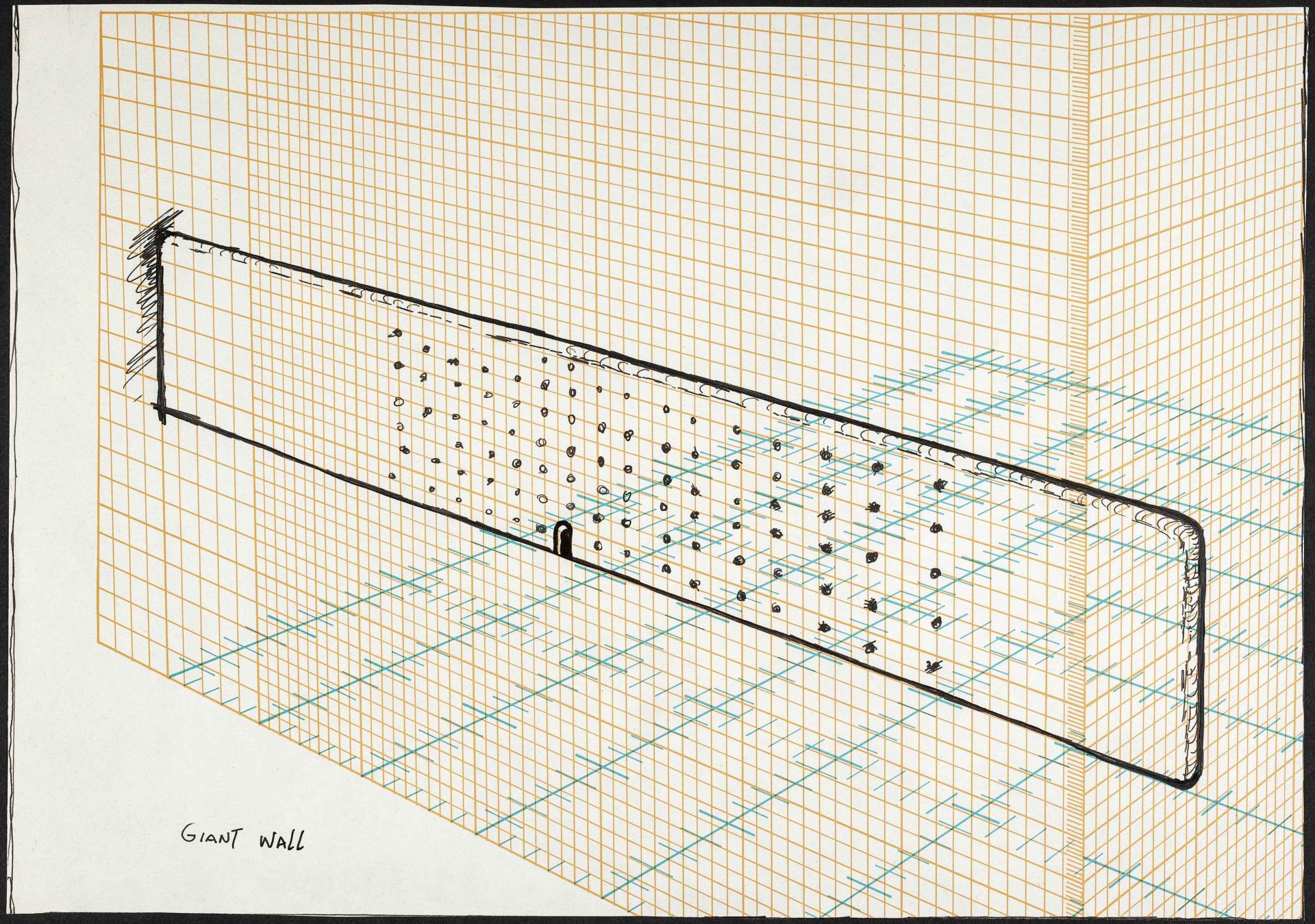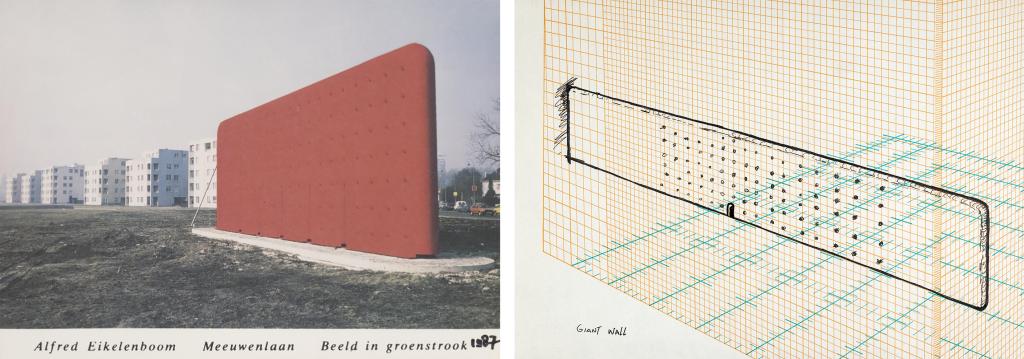Alfred Eikelenboom Archive

In the spring of this year the RKD received the archive of visionary artist Alfred Eikelenboom (1936-2014). From 1965 onwards, Eikelenboom’s work offered an aesthetic and thus more liveable alternative to post-war urban development which the artist deemed monotonous. His archive includes sketches, notes, books on urban development as well as personal photographs and material relating to projects such as The Nightwatch Revisited.
Utopian urbanism
Sculpture, architecture and urbanism overlap in Alfred Eikelenboom’s work. His utopian alternative to post-war urban planning emerged first in his Utopian models: sculptures made of grey-stained wood, in geometric shapes such as the cylinder, ellipse or related forms. Other useful shapes, such as the mushroom, he borrowed from science and nature. Some of his compositions were based on spreading of scattered confetti, for example. The archive contains a wealth of notes, sketches and project files providing insight into the background of Eikelenboom’s work.

2. New Year card by Eikelenboom, showing Utopian structures, December 1969, collection RKD
3. Poster for one-man exhibition at the Technische Hogeschool Eindhoven, 1976, collection RKD
Influences and motivation
Among the items in the archive is a group of large sheets which are proofs or finished impressions from the series Graphics on grids made in 1988-1989. These works were drawings on offset-printed sheets from the 1970s, combined with photographs that reveal the sources he used and demonstrate how they influenced his development. Past and present converge with visions of the future in one image. The series shows Eikelenboom’s affinity, in 1978, with abstract artists such as Peter Struycken, Ad Dekkers, André Volten and Bob Bonies, who played an important role in the late sixties and early seventies in an area of Dutch art that operated on the cusp between visual art and architecture. In 2013 Eikelenboom emphasised the social motivation which set him apart from more individualistic colleagues: ‘Seeing a good building reminds you that human existence is possible in spite of everything that degrades that existence. It keeps you going.’

Public spaces and museums
Several of Eikelenboom’s models have been executed in public spaces. Seen next to buildings their sculptural character comes to the fore. The most famous example is The Wall, which was erected on the IJplein in Amsterdam in 1978: a bright red fifteen-metre wall with rounded corners, which elicited the description ‘genius’ from the architect Rem Koolhaas, who designed the surrounding housing development. It is interesting to note that in earlier days Eikelenboom found an ally in designer William Graatsma, who was known for his constructions involving cubes – a shape that Eikelenboom made a point of avoiding. Graatsma offered Eikelenboom an important exhibition at Eindhoven’s College of Technology in 1976. Other one-man exhibitions were held at the Kunstmuseum, Museum Boijmans Van Beuningen and the Kunsthal. In 2002 Eikelenboom received a lifetime achievement award from the Netherlands Foundation for Visual Arts, Design and Architecture (Fonds voor Beeldende Kunsten, Vormgeving en Bouwkunst) for his exceptionally consistent body of work.

2. Alfred Eikelenboom, sketch for The Wall in Apeldoorn, c. 1998, collection RKD
Eikelenboom’s archive
Alfred Eikelenboom left behind a small library dedicated to utopian urbanism as well as photographs including of his early childhood years in Indonesia, and material relating to projects such as The Nightwatch Revisited, which aimed, unsuccessfully, to restore The Nightwatch to its original format. At the RKD the archive now forms part of a cluster that includes the archives of Eikelenboom’s friend and occasional exhibition partner Miguel-Ángel Cárdenas, the Swart Gallery, the Orez Gallery, Peter Struycken, Ad Dekkers, Constant Nieuwenhuijs, Jean Leering and the Steering Group of POBK (Praktijkonderzoek Beeldende Kunsten ¬– Research Group for Visual Arts Practice). The RKD would like to thank Esther Eikelenboom for this special donation, as well as the Kunstmuseum for their mediation and hospitality.